
Choose to read by topic:
What is Neck Pain
Neck Pain is a common condition, since the neck is flexible and functions as a support to the head. The neck is fragile and prone to injury, pain, or strain. This condition is common in working adults and elders. Working adults have neck pain due to working posture that requires an excessive neck movement, leading to a more severe pain. For example, office workers who sit in front of the computer have to repetitively switch between bending the neck and staring at the screens for hours. In this case, it can lead to neck pain if they are not cautious.
It is recommended to see a doctor when there is on-and-off neck pain and a chronic condition for several months. If the pain originates from muscles, there's a low chance to be a real problem. Since muscle soreness is related to activities in daily life, normally the pain will subside if you rest enough. However, the severe neck pain can be caused by cervical spondylosis with spurs, or cervical disc herniation.
What Causes Neck Pain
1. Wrong posture
- Sit at work with a table and chair that are not level to your body.
- Tilting the neck to talk on the phone for a long time.
- Work/play computer continuously for a long time
- Sleep on your stomach regularly or raise the neck to work continuously for a long time, etc.
2. Osteoarthritis / Arthritis Osteoarthritis is a condition that is common with age. Loss of minerals bones and joints, or having certain arthritis like rheumatoid arthritis, can also cause neck pain.
3. Psychological stress may be caused by work, economic problems, family, insufficient rest, etc., which causes the neck muscles to contract for abnormally long resulting to pain in the neck and head in the occipital area.
4. Neck accident: This causes the neck to move rapidly. The ligaments or muscles need to be stretched so much that they tear. Pain and muscle spasms causing awkward movement or if there is a serious accident, there may be a fracture or a displacement of the neck.
5. Other causes such as congenital cervical spondylosis, abnormal vision, etc.
Neck Pain Symptoms
- Bilateral neck pain or posterior neck pain.
- Limited movement of neck due to pain.
- A neck pain with referrals to head, cheeks, occiput, back, upper chest, arms, and hands.
- A neck pain with a referred pain to the arm, with or without numbness and weakness.
Neck Pain Treatment
How to diagnose neck pain
To diagnose neck pain, physicians can mainly diagnose from history taking and physical examination. There may be an additional examination to confirm hypotheses by CT scan or Spinal MRI, which can quickly pinpoint the root cause and locate the impairment boundary. It helps treatment planning to be more precise and exact with high-resolution contrast between tissues. The risk is less than using intravenous contrast media. More importantly, MRI causes no harm to tissues since there’s no radiation.
How can neck pain be treated
In case the symptoms do not improve with cold compression, hot compression, resting, and taking medication (paracetamol) for 5-7 days, it is recommended that patients see a doctor. The severity of neck pain can medically be divided into 2 categories as described below;
1. Conservative treatment
- Taking anti-inflammatory medications (NSAIDs), stretching exercise to improve neck flexibility, and strengthening exercise for neck muscles are usually the first step of treatment. With an exception in patients who are indicated otherwise.
- Transforaminal Epidural Steroid Injection (TESI) is a mixture between corticosteroid and anesthetic. The pain area is a site of injection. It helps relieve the inflammatory pain and locate the root cause. This treatment is indicated for patients who have undergone conservative treatments but the symptoms don’t improve, or patients with signs of nerve irritation.
However, these conservative treatments will work best with physiotherapy or a home-program strengthening exercise for neck muscles. If the symptoms have dramatically subsided, an additional treatment of surgery may not be needed.
2. Surgical treatment: Patients who have severe pain due to cervical disc herniation or cervical spondylosis, with a history of unsuccessful conservative treatments for more than 6-8 weeks, or those who have signs of muscle weakness indicating nerve irritation, it is recommended to have a surgical treatment.
- Anterior Cervical Discectomy and Fusion (ACDF): ACDF is a surgery that aims to treat pressure on one or more spinal nerve roots caused by fusing cervical spine together. It is a minimally invasive surgery using a microscope. This type of surgery is indicated in case of nerve or spinal cord entrapment due to disc herniation. The surgery efficiently helps relieve a referral pain to the arm.
- Cervical discectomy: This surgery aims to remove the protruded cervical disc and replace it with an artificial disc. Surgeons will cut off spurs and enlarge the spinal cord area to relieve nerve root entrapment. It is indicated in case patients have severe pain together with an apparent sign of numbness or weakness.
- Full-endoscopic spine surgery: This surgery will focus on cervical spine especially the area of disc herniation using endoscope. The incision site is minimal with the size of 8 mm. resulting in less injury and fast recovery. The patients can return to normal daily life faster.
Self-treatment For Neck Pain
When there is neck pain, it should be stopped by a warm and cold compress for 10-20 minutes, or use neck support or a rolled towel that is thick and long enough to support the weight. Wrap it around your neck to limit movement and reduce pressure from the weight of your head. pain relievers such as paracetamol or aspirin may be taken, for example, if taking the drug for 5-7 days and symptoms do not improve, consult a doctor.
When to consult a doctor about neck pain
If the neck and shoulder pain has persisted for a long period of time, especially the neck pain that has occurred more than 2 weeks, and the symptoms do not improve with self-treatment, it is recommended that patients see a doctor to get a diagnosis and treatment. The symptoms indicating urgency are as follows:
- A referred pain to shoulders, arms, shoulder blades: an radiating pain with neck movement, numbness or burning pain in the arm or the hand, or an abnormal sensation.
- Muscle weakness in arms, legs, or abnormally stiff muscles.
- Limited movement of neck, or decreased neck mobility with severe pain.
- Abnormal neck posture: wryneck (cervical dystonia), abnormal bending neck posture, a lump at the back of the neck.
- Other symptoms; such as, high fever, tenderness with severe pain, or muscle weakness.
- A history of neck injury, trauma, or whiplash injury together with severe neck pain, numbness and weakness of arms and hands, burning pain or radiating sensation along the arm.
Neck Pain Prevention
Arrange proper daily posture, such as not sleeping on your stomach regularly. Be careful and avoid gestures and gestures that require a lot of bow and tilt.
 |
The sleeping position should not use pillows that are too hard or too soft. Should use a pillow under the neck so that the face is parallel to the bed. |
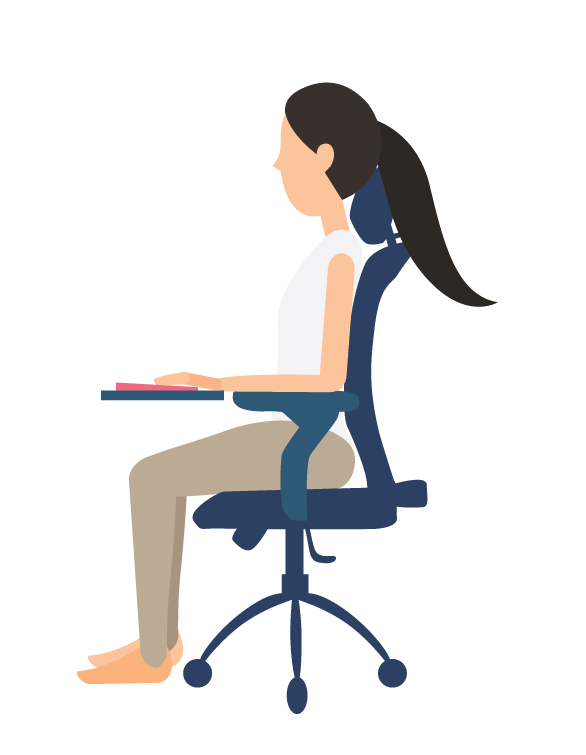 |
Work posture Arrange the work desk and chair to match the body physique. By having your back against the back of the chair, if using a computer, adjust the monitor to eye level. The arms are attached to the body and should be placed on the armrests and knee level slightly lower than the hip level And should modify the posture frequently and focus on keeping the spine in a straight line. |
Exercising the muscles in the neck to increase flexibility
Exercising muscles to improve flexibility May be done after a warm compress Because the heat will help the tissues. Improved flexibility and pain relief too.
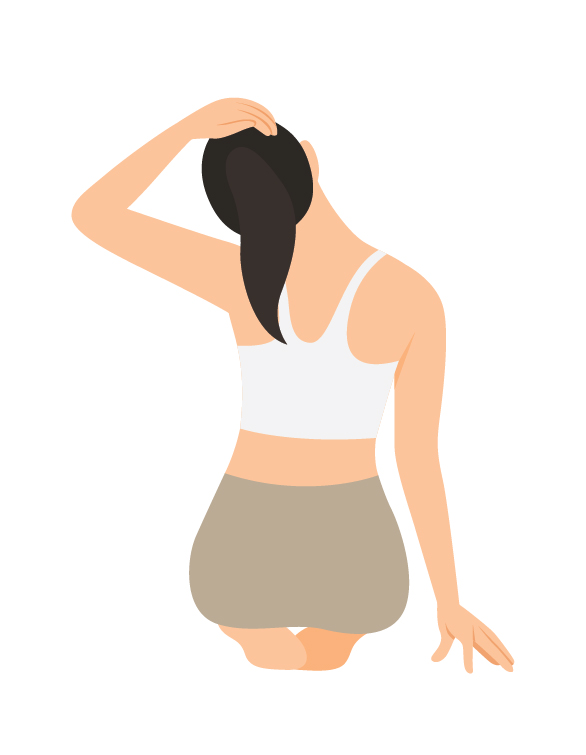 |
Position 1: Use the left hand to hold the head above the right ear, pull the head to the left until the neck and shoulders feel tight. Hold and count to 10, repeat 5-10 times, switch on the right side. |
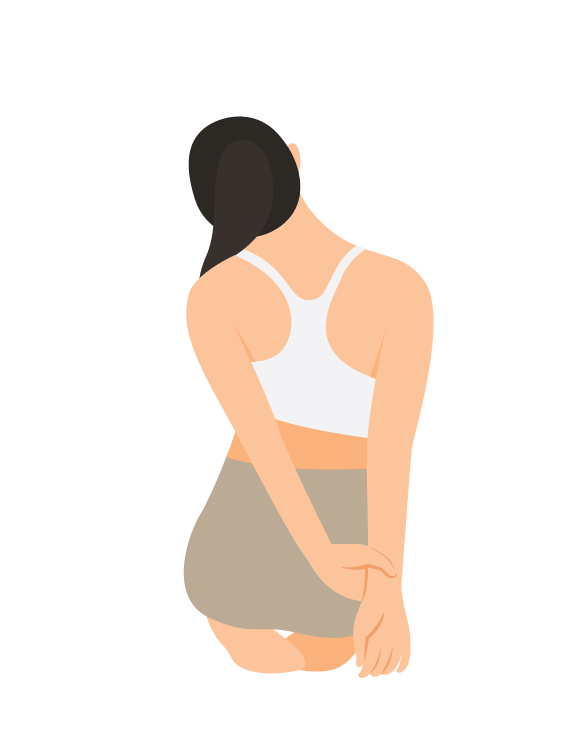 |
Step 2: Use your left hand to grab the right hand and pull down. Along with tilting the head to the left until the neck and shoulders feel tight. Hold and count to 10, repeat 5-10 times, switch on the right side. |
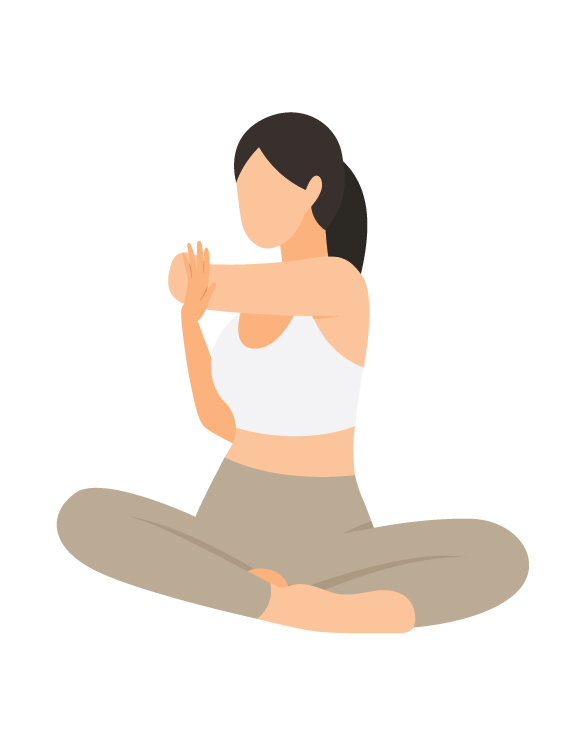 |
Position 3 Use your right hand to hold the left elbow and pull it over your body. With the head turned to the left until the neck and shoulders feel tight. Hold and count to 10, repeat 5-10 times, switch on the right side. |
Exercise the neck muscles for strength
Begin when your neck pain subsides. By contracting the neck muscles against the hand force as in the picture, while keeping the neck in a straight position all the time, Hold and count to 10, doing 10 poses 2-3 times a day
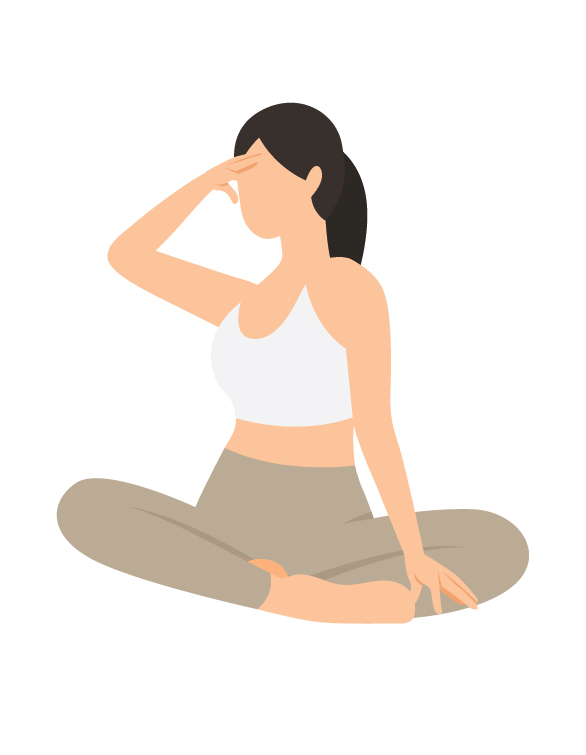 |
Position 1 Place your index and middle fingers on your forehead while applying pressure to your back. Keep your head tightly resistant. While exercising, keep your neck in a straight position. |
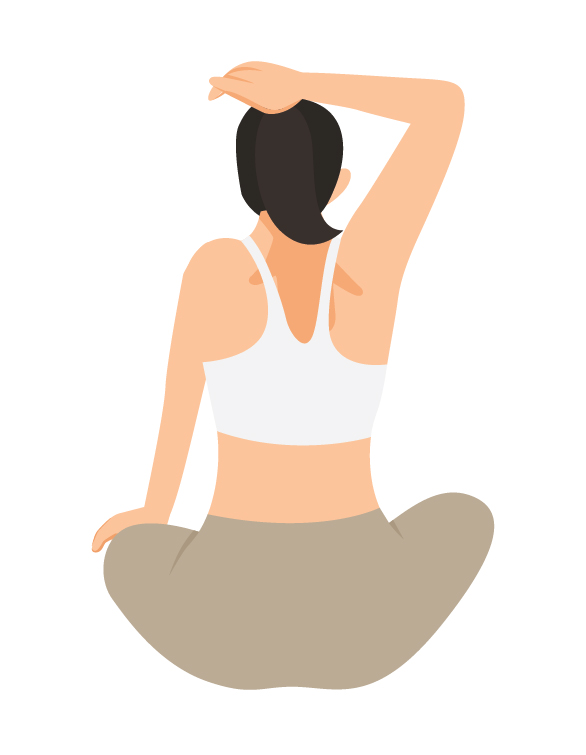 |
Position 2: Place your index and middle fingers on the occiput while applying pressure towards the front. Keep your head tightly resistant. While exercising, keep your neck in a straight position. |
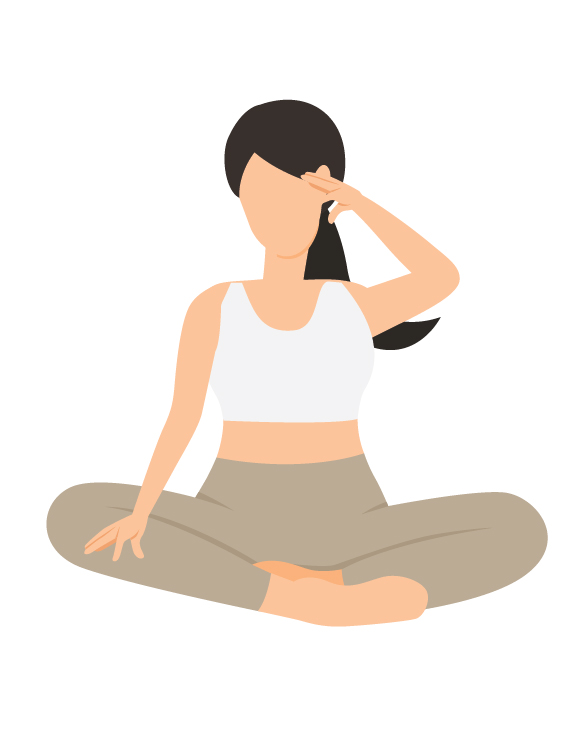 |
Position 3 Use the index finger and middle finger on the right side of the temple. While exerting pressure to the left side Keep your head firmly resistant while exercising. Keep your neck in a straight position. Switch with the left side. |
Online Consultation
Article of Spine Center






